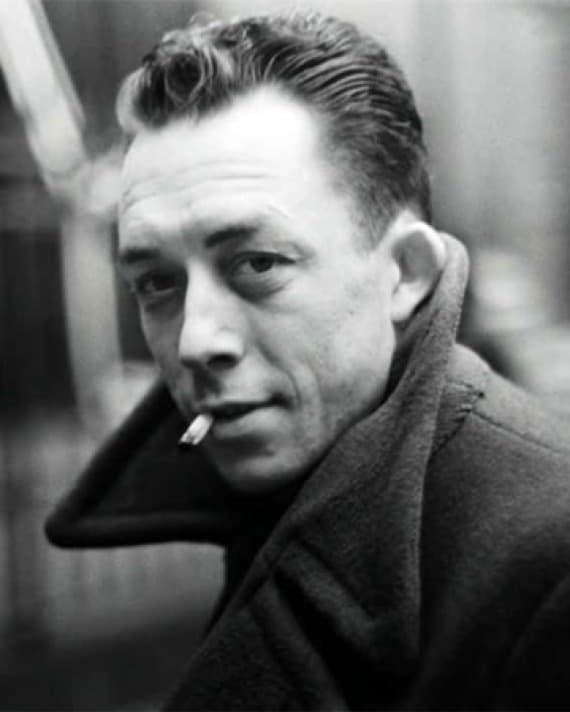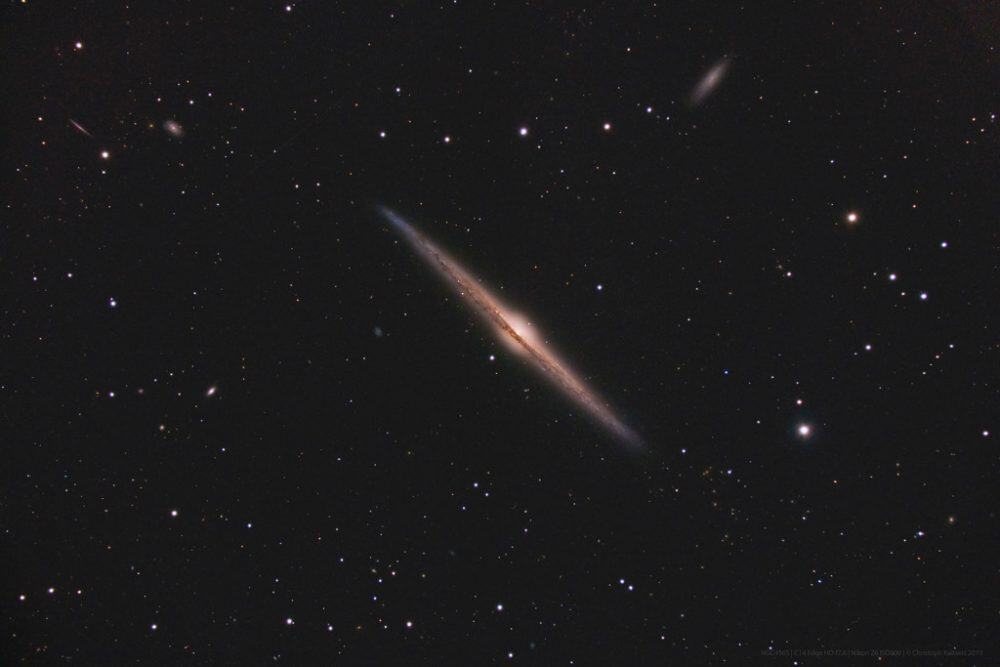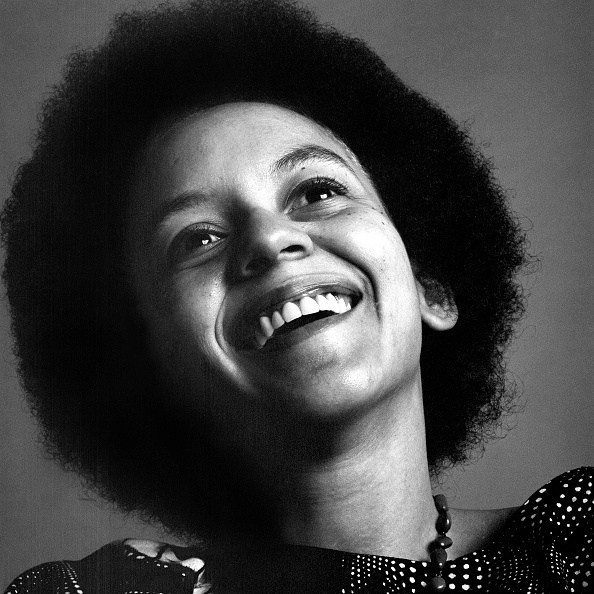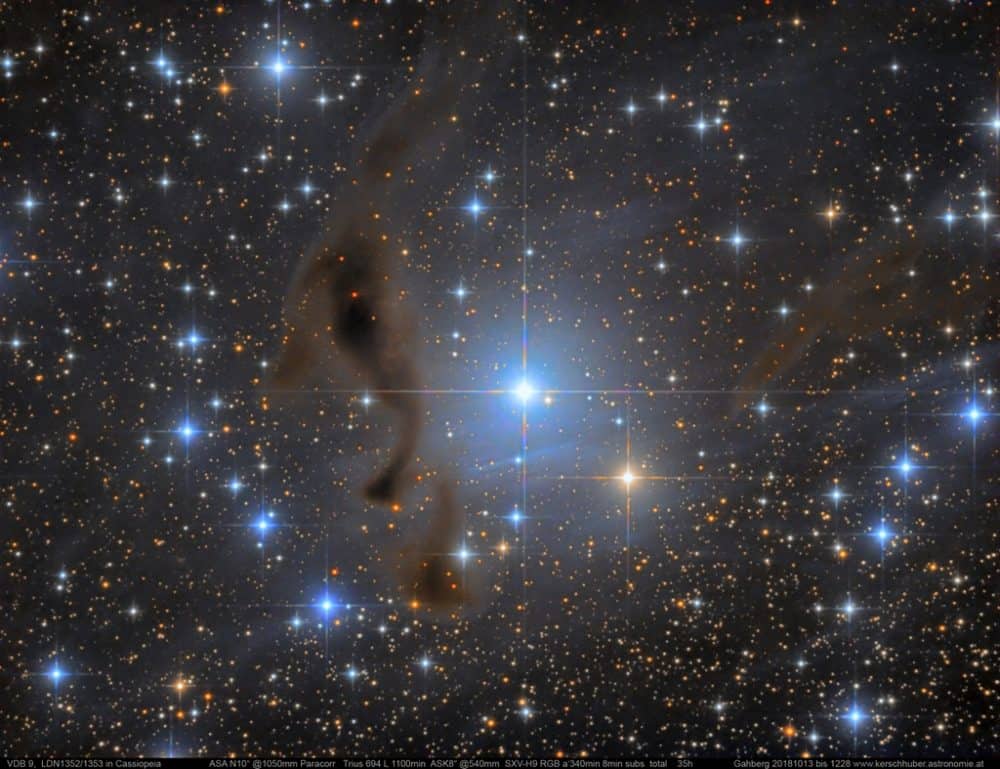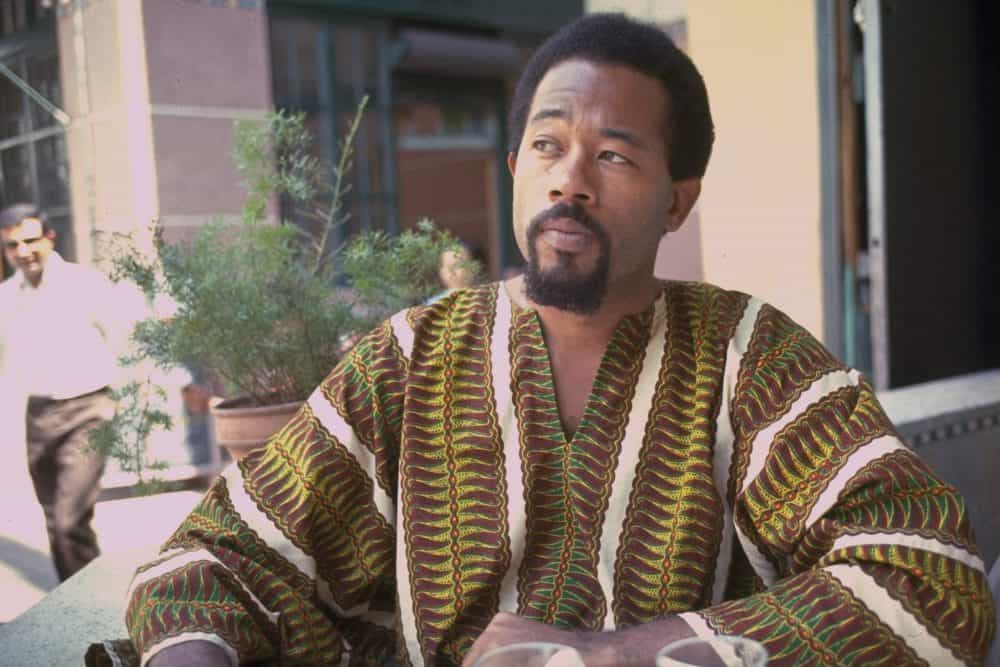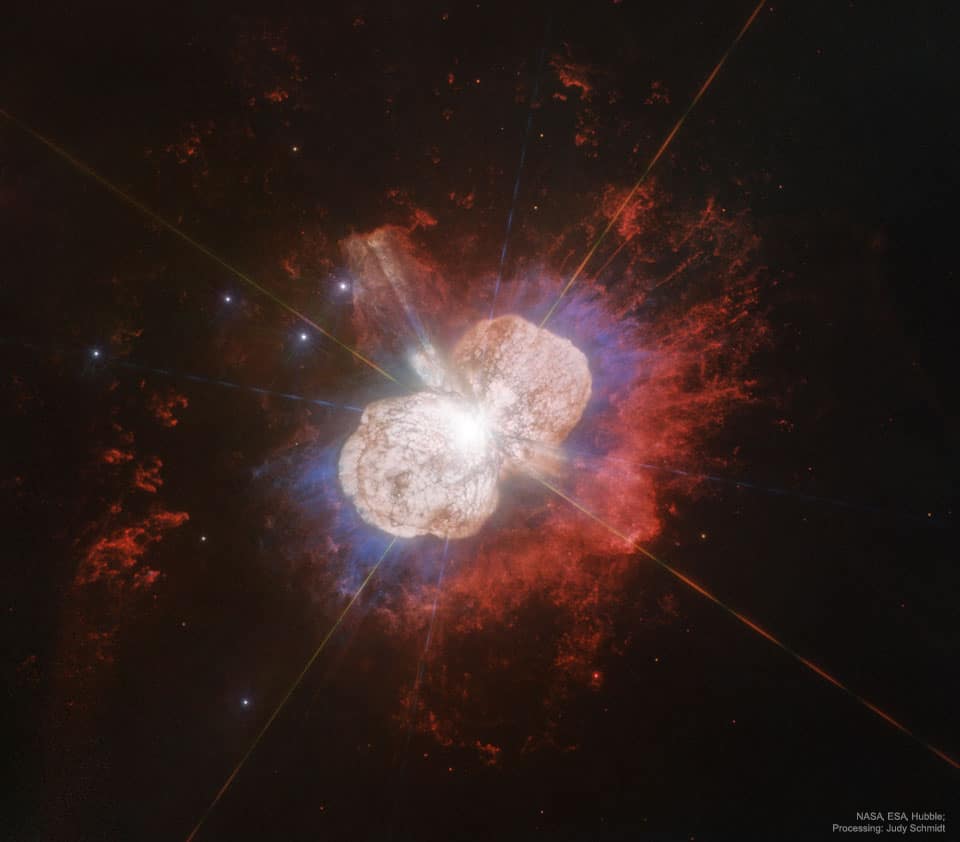Blog
“The only way to deal with an unfree world is to become so absolutely free that your very existence is an act of rebellion.” – Albert Camus
more...
Magnificent spiral galaxy NGC 4565 is viewed edge-on from planet Earth. Also known as the Needle Galaxy for its narrow profile, bright NGC 4565 is a stop on many telescopic tours of the northern sky, in the faint but well-groomed constellation Coma Berenices. This sharp, colorful image reveals the galaxy’s bulging central core cut by obscuring dust lanes that lace NGC 4565’s thin galactic plane. An assortment of other background galaxies is included in the pretty field of view, with neighboring galaxy NGC 4562 at the upper right. NGC 4565 itself lies about 40 million light-years distant and spans some 100,000 light-years. Easily spotted with small telescopes, sky enthusiasts consider NGC 4565 to be a prominent celestial masterpiece Messier missed.
more...Joseph James LaBarbera (born February 22, 1948) is an American jazz drummer and composer. He is best known for his recordings and live performances with the trio of pianist Bill Evansin the final years of Evans’s career. His older brothers are saxophonist Pat LaBarbera and trumpeter John LaBarbera.He grew up in Mount Morris, New York. His first drum teacher was his father. For two years in the late 1960s he attended Berklee College of Music, then went on tour with singer Frankie Randall. After Berklee he spent two years with the US Army band at Fort Dix, New Jersey. He began his professional career playing with Woody Herman and the Thundering Herd.
His reputation grew in the 1970s when he spent four years recording and touring with Chuck Mangione. He also worked as a sideman for Bob Brookmeyer, Jim Hall, Art Farmer, Art Pepper, John Scofield, Toots Thielemans, and Phil Woods. In 1979 he was a member of the Bill Evans trio, then spent much of the 1980s and early 1990s with Tony Bennett. He was in a quartet with his brother Pat and in a trio with Hein van de Geyn and John Abercrombie. He has taught at the California Institute of the Arts and the Bud Shank Jazz Workshop.
more...Ernest Kador Jr. (February 22, 1933 – July 5, 2001), known by the stage name Ernie K-Doe, was an African-American rhythm-and-blues singer best known for his 1961 hit single “Mother-in-Law“, which went to number 1 on the Billboard pop chart in the U.S.
Born in New Orleans, K-Doe recorded as a member of the group the Blue Diamonds in 1954 before making his first solo recordings the following year. “Mother-in-Law“, written by Allen Toussaint, was his first hit, reaching number 1 on both the Billboard pop chart and the Billboard R&B chart. K-Doe never had another top-40 pop hit, but “Te-Ta-Te-Ta-Ta” (number 21, 1961) and “Later for Tomorrow” (number 37, 1967) reached the R&B top 40.
In the 1980s K-Doe did radio shows on the New Orleans community stations WWOZ and WTUL. The shows were known for his explosively energetic announcements and frequent self-promotion (occasionally causing problems for the noncommercial station). K-Doe’s catch phrases included “Burn, K-Doe, Burn!”, “I’m a Charity Hospital Baby!” and (addressed to himself) “You just good, that’s all!”. For a time he billed himself as “Mister Naugahyde”, until he was ordered to desist by the owners of the Naugahyde trademark. K-Doe then explained that it was a misunderstanding; he was actually referring to himself as “Mister M-Nauga-Ma-Hyde”, a word he invented himself.
https://www.youtube.com/watch?v=03jAXN4BapY&t=288s
more...George Holmes “Buddy” Tate (February 22, 1913 – February 10, 2001) was a jazz saxophonist and clarinetist.
Tate was born in Sherman, Texas, and began performing on alto saxophone. As a teenager in 1925, he played with his brother and their band called McCloud’s Night Owls.”
Tate quickly switched to tenor saxophone making a name for himself in bands such as the one led by Andy Kirk. He joined Count Basie in 1939 and stayed with him until 1948. He had been selected by Basie after the sudden death of Herschel Evans, which Tate stated he had predicted in a dream.
After his period with Basie ended, he worked with several other bands before he found success on his own, starting in 1953 in Harlem. His group worked at the “Celebrity Club” from 1953 to 1974. In the late 1970s, he co-led a band with Paul Quinichette and worked with Benny Goodman.
https://www.youtube.com/watch?v=JqaI28ZKXEM
more...World Music on Flamenco Fridays with the Maestro Gitano
Sabicas (proper name: Agustín Castellón Campos) (16 March 1912 – 14 April 1990) was a Spanish flamenco guitarist of Romani origin. Sabicas was born in Pamplona, Spain, and began playing guitar at the age of five and made his performing debut two years later. His early style was influenced by Ramón Montoya, to whom he was related on his mother’s side of the family. Extensive collaboration with important cantaores (male flamenco singers) of the period helped him develop his personal style.
https://www.youtube.com/watch?v=4bUmzzegEwU
more...Centered in a well-composed celestial still life, pretty, blue vdB 9 is the 9th object in Sidney van den Bergh’s 1966 catalog of reflection nebulae. It shares this telescopic field of view, about twice the size of a full moon on the sky, with stars and dark, obscuring dust clouds in the northerly constellation Cassiopeia. Cosmic dust is preferentially reflecting blue starlight from embedded, hot star SU Cassiopeiae, giving vdB 9 the characteristic bluish tint associated with a classical reflection nebula. SU Cas is a Cepheid variable star, though even at its brightest it is just too faint to be seen with the unaided eye. Still Cepheids play an important role in determining distances in our galaxy and beyond. At the star’s well-known distance of 1,540 light-years, this cosmic canvas would be about 24 light-years across.
more...Edward Haydn Higgins (February 21, 1932 – August 31, 2009) was a jazz pianist, composer, and orchestrator.
For more than two decades Higgins worked at some of Chicago’s most prestigious jazz clubs, including the Brass Rail, Preview Lounge, Blue Note, Cloister Inn and Jazz, Ltd. His longest and most memorable tenure was at the long-gone London House, where he led his jazz trio from the late 1950s to the late 1960s, playing opposite jazz stars of this period, including Cannonball Adderley, Bill Evans, Erroll Garner, Stan Getz, Dizzy Gillespie, Wes Montgomery, Oscar Peterson and George Shearing, among others. Later, Higgins said the opportunities to play jazz music with Coleman Hawkins and Oscar Peterson were unforgettable moments. Higgins spent his time at the London House Restaurant with bassist Richard Evans and drummer Marshall Thompson. Higgins also worked for Chess Records as a producer.
During his stay in Chicago, Higgins also recorded a significant number of albums under his auspices and many more as a sideman with a wide variety of musicians, ranging in style from tenor saxophonists Hawkins to Sonny Stitt to Wayne Shorter; trumpeters Bobby Lewis to Harry Edison to Lee Morgan and Freddie Hubbard; and trombonists Jack Teagarden to Al Grey. His versatility was captured on stage and records, backing up singers and leading his own projects as both pianist and orchestrator, working in every jazz circle from dixieland to modal styles. Although he opted to decline the offer, Higgins was asked at one point by Art Blakey to join the seminal hard bop quintet, The Jazz Messengers.
https://www.youtube.com/watch?v=k9BqZxir_AI
more...Corey Harris (born February 21, 1969; Denver, Colorado) is an American blues and reggae musician, currently residing in Charlottesville, Virginia. Along with Keb’ Mo’ and Alvin Youngblood Hart, he raised the flag of acoustic guitar blues in the mid-1990s. He was featured on the 2003 PBS television mini-series, The Blues, in an episode directed by Martin Scorsese.
Harris was born and raised near Denver, Colorado. He graduated from Bates College in Lewiston, Maine with a bachelor’s degree in 1991, and was awarded an honorary doctorate in 2007. Harris received a Thomas J. Watson Fellowship for language studies in Cameroon in his early twenties, before taking a teaching post in Napoleonville, Louisiana under the Teach For America program. His debut solo album Between Midnight and Day (1995) was produced by composer/producer Larry Hoffman, who discovered him in 1994 in Helena, AR. The record included covers of Sleepy John Estes, Fred McDowell, Charlie Patton, Muddy Waters, and Booker White.
In 2002, Harris collaborated with Ali Farka Toure on his album Mississippi to Mali, fusing blues and Toure’s music from northern Mali. In 2003, he contributed to the Northern Blues release Johnny’s Blues: A Tribute To Johnny Cash.
more...Eunice Kathleen Waymon (February 21, 1933 – April 21, 2003 Tryon, NC), known professionally as Nina Simone (/ˈniːnə
Born in North Carolina, the sixth child of a preacher, Waymon initially aspired to be a concert pianist. With the help of a few supporters in her hometown of Tryon, she enrolled in the Juilliard School of Music in New York.
Waymon then applied for a scholarship to study at the prestigious Curtis Institute of Music in Philadelphia, where she was denied admission despite a well-received audition. Waymon became fully convinced this rejection had been entirely due to racial discrimination. In 2003, just days before her death, the Curtis Institute of Music bestowed on her an honorary degree.
To make a living, Waymon started playing piano at a nightclub in Atlantic City. She changed her name from Eunice Waymon to “Nina Simone” to disguise herself from family members, having chosen to play “the devil’s music” or “cocktail piano”. She was told in the nightclub that she would have to sing to her own accompaniment, which effectively launched her career as a jazz vocalist.
Simone recorded more than 40 albums between 1958 and 1974. She made her debut with the album Little Girl Blue. She had a hit in the United States in 1958 with “I Loves You, Porgy“.
Simone’s musical style fused gospel and pop with classical music, in particular Johann Sebastian Bach, and accompanied expressive, jazz-like singing in her contralto voice.
more...Eta Carinae may be about to explode. But no one knows when – it may be next year, it may be one million years from now. Eta Carinae‘s mass – about 100 times greater than our Sun – makes it an excellent candidate for a full blown supernova. Historical records do show that about 170 years ago Eta Carinae underwent an unusual outburst that made it one of the brightest stars in the southern sky. Eta Carinae, in the Keyhole Nebula, is the only star currently thought to emit natural LASER light. This featured image brings out details in the unusual nebula that surrounds this rogue star. Diffraction spikes, caused by the telescope, are visible as bright multi-colored streaks emanating from Eta Carinae’s center. Two distinct lobes of the Homunculus Nebula encompass the hot central region, while some strange radial streaks are visible in red extending toward the image right. The lobes are filled with lanes of gas and dust which absorb the blue and ultraviolet light emitted near the center. The streaks, however, remain unexplained.
more...Leroy Jones (born February 20, 1958) is a jazz trumpeter from New Orleans, Louisiana. Jones began playing trumpet at the age of ten, and by the time he was 12 was leading the Fairview Baptist Church Marching Band, a group of young musicians organized by guitar– and banjo-player Danny Barker. When the musicians’ union forced Barker to disband the group in 1974, Jones became a union musician and took over the running of the group, renamed the Hurricane Brass Band, himself. In 1975 or 1976 he left the group, touring for a time with Eddie Vinson and Della Reese before forming his own group, the Leroy Jones Quintet. In 1991 Jones joined the big band of Harry Connick, Jr., and the exposure with Connick’s band (including the opportunity for the Leroy Jones Quintet to open for Connick, which they did in 1994), led to Jones’ releasing his first album under his own name; Mo’ Cream From The Crop came out on the Columbia Records label in 1994. The Leroy Jones Quintet continues to tour and record, and since 2004 Jones has also appeared with the Preservation Hall Jazz Band and Dr. John.
more...Oscar Marcelo Alemán (February 20, 1909 – October 14, 1980) was an Argentine jazz guitarist, singer, and dancer. He is widely recognized in his country and abroad as one of the best jazz performers, and as an influential artist.
At the age of six, Alemán joined the family ensemble, the Moreira Sextet, and played the cavaquinho, a Brazilian ukulele, before taking up the guitar. The group travelled to Buenos Aires to perform at the Parque Japonés, Nuevo Theater, and at the Luna Park. Later they toured in Brazil.
Alemán was orphaned at age of ten when his mother died and his father committed suicide. He sustained himself by working sporadically as a dancer and musician on the streets of Santos, Brazil. When he saved enough money, he bought a guitar and started to play professionally at party venues in a duo called Los Lobos with his friend, Brazilian guitarist Gastón Bueno Lobo. The duo moved to Buenos Aires in 1925 to work under contract for the comedian Pablo Palitos. In Buenos Aires, they formed a trio with violinist Elvino Vardaro. They added tango to their repertoire and recorded with Agustín Magaldi. They later played with Carlos Gardel and Enrique Santos Discépolo.
more...More Posts
- Earl Hooker
- Gene Krupa
- World Fusion Kane Mathis
- Daily Roots G G Allstars
- Climate Change Premiums
- Toni Morrison Empowerment
- Sitting Bull Warriors
- MLK Brotherhood
- Surviving the Apocalypse 2025 I
- Cosmo Polaris Northstar
- Kenny Wheeler
- Grady Tate
- Allen Toussaint
- World Music Mari Boine
- Daily Roots Gregory Isaacs
- STOP I’m Sorry for Your Loss
- Chief Joseph Free Men
- MLK Fools
- Cosmo HOPS 150/153
- Fred White
